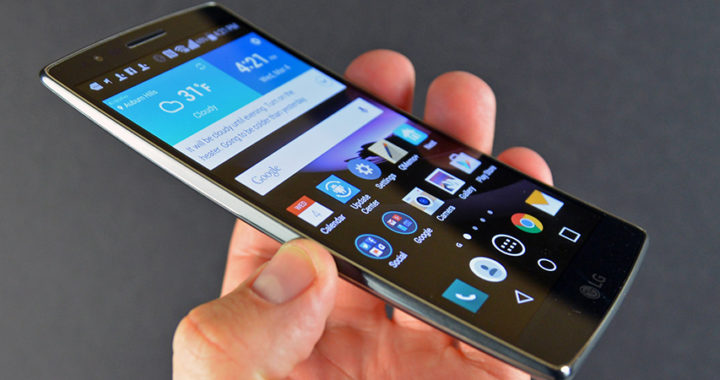LG Electronics first unveiled its plastic OLED or POLED display panel through the introduction and subsequent launch of the LG G Flex Android phablet in October 2013. This device was the first to feature a curved display. Since then, the multinational electronics company has been equipping some of its smartphones and other products with the same display panel technology.
Understanding POLED technology
But what is POLED? How is it different from other OLED panels? And what is the difference between POLED and the Super AMOLED technology from Samsung?
POLED should not be confused with PMOLED or passive-matrix OLED however. PMOLED is an OLED control scheme in which each row or line in the display is controlled sequentially and one-by-one. In other words, passive matrix provides current to an entire row of LED one at a time.
On the other hand, AMOLED or active-matrix OLED is a control scheme that uses thin-film transistor backplane to actively maintain a particular pixel state while other pixels are being addressed at the same time. This scheme allows each pixel to be controlled individually.
Plastic OLED is an application of AMOLED display technology nonetheless. It is also an OLED panel that uses plastic as a substrate. Note that typical AMOLED panels such as the Super AMOLED panel from Samsung use glass substrate. Using plastic substrates gives POLED several advantages.
Advantages of Plastic OLED
One of the advantages of POLED over conventional AMOLED is thinness. The plastic substrate is considerably half as thin as glass substrates, thus allowing manufacturers to produce thinner display panels that can be fitted into thinner devices.
Another advantage of POLED is flexibility. Take note that LG G Flex was the first smartphone to feature a curved display thanks to its POLED panel. Plastic is essentially more flexible than glass. It is also worth mentioning that glass is rigid while plastic is easier to form into new shapes.
Plastic OLED is also more durable than typical AMOLED. The flexibility of plastic gives some additional shock absorbance over glass. This durability also means POLED is less susceptible to cracking and shattering from dropping.
The aforementioned thinness, flexibility, and durability of POLED collectively translate to a notable advantage: The design of new form factors. LG Electronics has demonstrated this and Samsung has introduced several flagship smartphones with innovative form factors, including bezel-less and edge-to-edge displays using AMOLED with plastic substrates.
New form factors can also be applied in wearable technologies and televisions or monitors. POLED can also be fitted in the dashboards, a portion of the windshields, or the infotainment systems of automotive vehicles. Note that both LG and Samsung have introduced concept devices featuring foldable and bendable displays sung a specific variant of POLED: Flexible OLED or FOLED.
Cost is another advantage of plastic OLED over glass-based AMOLED. Working with plastic is more cost effective than with molding glass. This means that POLED or devices with POLED can be slightly cheaper than device with glass-based AMOLED due to reduced manufacturing cost.
Other advantages of POLED stem from the advantages of OLED over other display technologies such as in-plane switching or IPS LCD or twisted nematic or TN LCD. These advantages are energy efficiency due to the absence of backlighting, high contrast ratio due to natural blacks, and overall display quality.
Disadvantages of Plastic OLED
The disadvantages of plastic OLED revolve around the disadvantages that are inhered in AMOLED display technology. Thus, one of the notable disadvantages of POLED is a shorter lifespan than IPS LCD or TN LCD panels. Color-specific organic materials in an OLED have varied lifespan. The blue materials degrade faster than other color, thus a plastic OLED can demonstrate screen burns within two years or less.
Poor outdoor visibility is another disadvantage. IPS LCD is essentially brighter than OLED because of the addition of backlighting. This means that a POLED can be difficult to view outdoors or under direct sunlight.
Other disadvantages of POLED are vulnerability to damage caused by contact or exposure water or moisture and the tendency to reproduce less accurate colors due to oversaturation.

